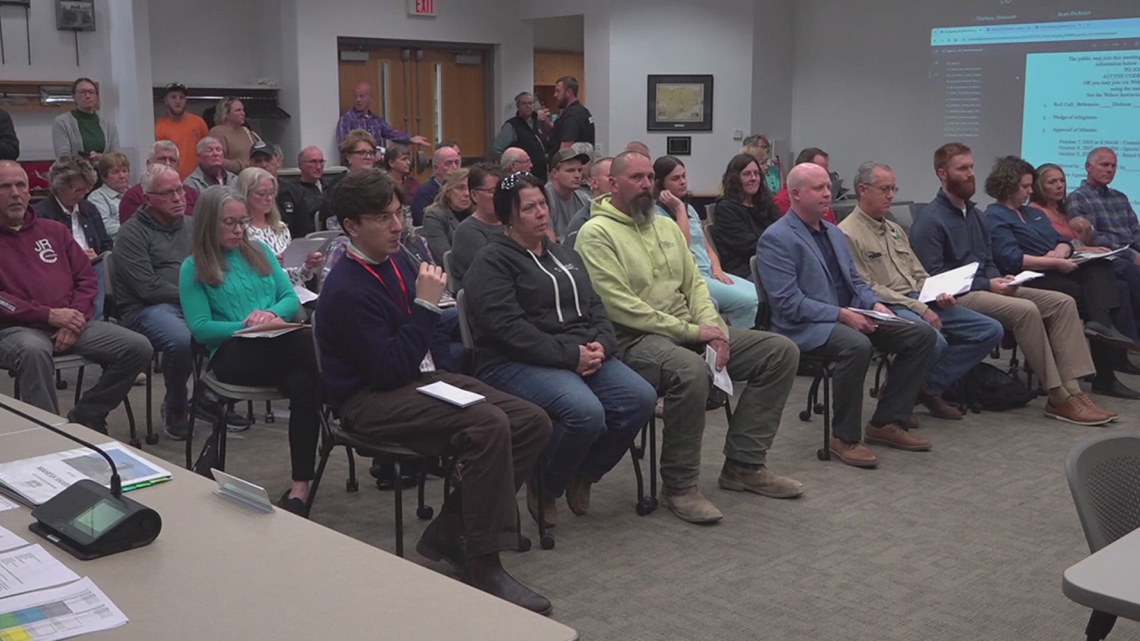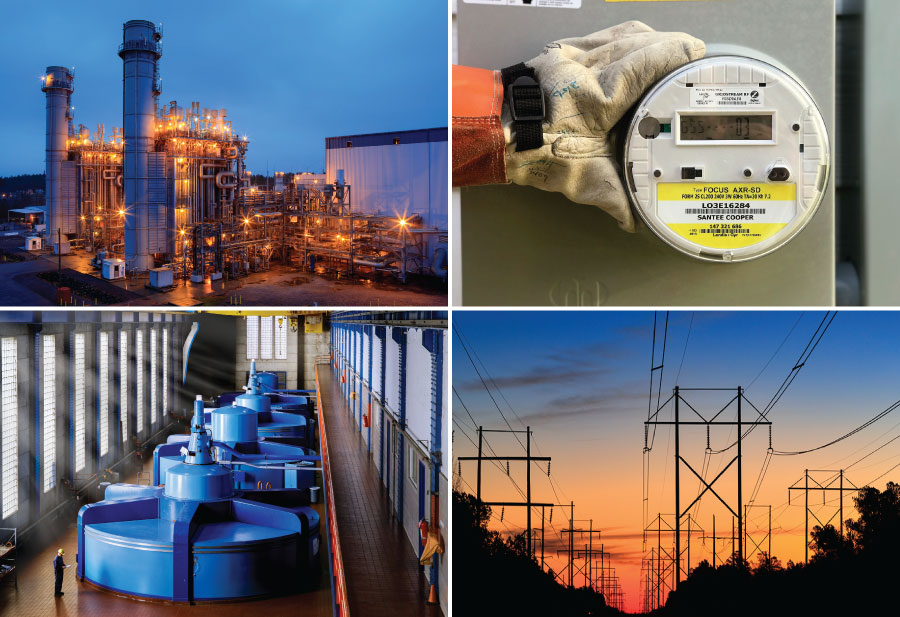Report on U.S. Renewable Diesel Trade Policy and Sustainable Development
Executive Summary
Clean Fuels Alliance America has called upon the U.S. Trade Representative (USTR) to address a significant trade policy loophole. This loophole provides tariff exemptions for imported renewable diesel while imposing tariffs on renewable feedstocks, creating an unfair competitive advantage for foreign producers. This policy discrepancy undermines the domestic clean fuels industry, negatively impacts American farmers, and conflicts with the United States’ commitment to several key Sustainable Development Goals (SDGs), including those related to clean energy, economic growth, and sustainable industry.
Analysis of the Tariff Discrepancy
A critical imbalance in U.S. trade policy has been identified, which creates unfavorable market conditions for domestic renewable fuel producers. The core issues are as follows:
- Since April, tariff exemptions have been granted to a range of imported energy products, including renewable diesel.
- Simultaneously, new tariffs have been implemented on foreign-sourced renewable feedstocks.
- This structure allows offshore producers to access global feedstocks without tariffs, produce renewable diesel, and then import the finished product into the United States duty-free.
- The result is a loophole that gives preferential treatment to imports, directly undercutting domestic production.
Economic and Industrial Impact
The current trade policy has led to significant adverse effects on the U.S. economy and its progress toward sustainable industrialization, directly impacting SDG 8 (Decent Work and Economic Growth) and SDG 9 (Industry, Innovation, and Infrastructure).
- Underutilization of Domestic Capacity: The U.S. clean fuels industry is currently operating at only 50-60% of its capacity, indicating a substantial loss of potential economic output and a failure to leverage existing sustainable infrastructure, a key target of SDG 9.
- Threat to Domestic Industry and Jobs: The unfavorable market economics threaten the viability of U.S. biodiesel producers and the jobs they support, hindering the objective of sustained and inclusive economic growth as outlined in SDG 8.
- Impact on Agriculture: American soybean farmers, who provide essential feedstock for the domestic industry, are negatively affected by the reduced demand and suppressed market conditions.
Implications for Sustainable Development Goals (SDGs)
The trade loophole has direct and negative implications for achieving multiple Sustainable Development Goals:
- SDG 7 (Affordable and Clean Energy): By disadvantaging domestic producers, the policy weakens the nation’s capacity for self-sufficient and sustainable clean energy production, potentially compromising long-term energy security.
- SDG 8 (Decent Work and Economic Growth): The policy creates an unlevel playing field that jeopardizes domestic jobs in the renewable energy and agricultural sectors, contradicting the goal of promoting productive employment and decent work for all.
- SDG 9 (Industry, Innovation, and Infrastructure): Allowing domestic production capacity to remain severely underutilized is a direct setback to the goal of building resilient infrastructure and fostering sustainable industrialization.
- SDG 12 (Responsible Consumption and Production): The policy encourages reliance on imported fuels, potentially from sources with less stringent environmental oversight, while discouraging established sustainable production patterns within the United States.
Data and Recommendations
According to estimates, over three million barrels of renewable diesel have been imported into the U.S. this year, with a majority originating from Singapore. To align U.S. trade policy with its economic and sustainable development objectives, the following actions are recommended:
- The U.S. Trade Representative must close the tariff loophole to restore fair market competition for domestic renewable fuel producers.
- The administration should undertake a comprehensive review of trade barriers to ensure they support, rather than hinder, the domestic clean energy sector.
- A proactive strategy should be implemented to identify and secure U.S. export opportunities, strengthening the domestic industry’s role in the global transition to clean energy.
1. Which SDGs are addressed or connected to the issues highlighted in the article?
-
SDG 7: Affordable and Clean Energy
The article focuses on “Clean Fuels,” “renewable diesel,” and “biodiesel,” which are central to increasing the share of renewable energy in the energy mix, a key objective of SDG 7.
-
SDG 8: Decent Work and Economic Growth
The trade issue directly impacts the U.S. biodiesel industry’s economic health. The article states the industry is “operating at around 50 to 60 percent of its capacity,” which hinders economic productivity, growth, and potentially employment in the sector.
-
SDG 9: Industry, Innovation, and Infrastructure
The discussion revolves around the domestic production capacity for renewable fuels. The statement, “We have the capacity in the United States to produce it,” points to existing industrial infrastructure that is being underutilized due to market distortions, which is a concern for sustainable industrialization.
-
SDG 17: Partnerships for the Goals
The core of the article is a trade policy issue. The call for the U.S. Trade Representative to fix a tariff loophole relates to creating fair, non-discriminatory, and equitable international trade rules, which is a major theme of SDG 17.
2. What specific targets under those SDGs can be identified based on the article’s content?
-
Target 7.2: Increase substantially the share of renewable energy in the global energy mix.
The article’s entire subject is renewable diesel, a key component of the renewable energy mix. The trade dispute described is presented as a barrier to the growth and competitiveness of the domestic renewable fuel industry, thereby affecting the country’s ability to increase its share of renewable energy from local sources.
-
Target 8.2: Achieve higher levels of economic productivity through diversification, technological upgrading and innovation.
The article highlights that the domestic clean fuels industry is operating well below its potential (“at around 50 to 60 percent of its capacity”) due to “unfavorable” market economics caused by the tariff loophole. Addressing this issue would allow the industry to improve its economic productivity and contribute more effectively to the economy.
-
Target 9.2: Promote inclusive and sustainable industrialization.
The plea to support the domestic biodiesel industry against what is perceived as unfair foreign competition is a call to promote and sustain a key domestic industry. The article implies that the current trade situation is undermining U.S. industrial capacity in the renewable energy sector.
-
Target 17.10: Promote a universal, rules-based, open, non-discriminatory and equitable multilateral trading system.
The Clean Fuels Alliance America is asking the U.S. Trade Representative to “close the gap on imported renewable diesel exempt from reciprocal tariffs.” This is a direct call to reform a trade policy that is seen as creating an unfair advantage for imports and undercutting domestic producers, aligning with the goal of establishing a more equitable trading system.
3. Are there any indicators mentioned or implied in the article that can be used to measure progress towards the identified targets?
-
Industrial Capacity Utilization Rate
The article explicitly states, “Our industry is operating at around 50 to 60 percent of its capacity.” This is a direct quantitative indicator that can be used to measure the economic health and productivity of the renewable fuels industry (relevant to Targets 8.2 and 9.2).
-
Volume of Imported Renewable Fuels
The article provides a specific figure: “more than three million barrels of renewable diesel, mostly from Singapore, have been imported into the U.S. this year.” This quantifiable data serves as an indicator of the scale of the trade issue and can be used to track the impact of any policy changes (relevant to Targets 7.2 and 17.10).
-
Existence of Tariffs and Tariff Exemptions
The article’s central theme is the “tariff exemptions” and the call to fix the “loophole.” The presence, absence, or modification of these specific trade rules serves as a policy-based indicator for measuring progress toward a more equitable trading system (relevant to Target 17.10).
4. Create a table with three columns titled ‘SDGs, Targets and Indicators” to present the findings from analyzing the article.
| SDGs | Targets | Indicators |
|---|---|---|
| SDG 7: Affordable and Clean Energy | 7.2: Increase substantially the share of renewable energy in the global energy mix. | Volume of imported renewable diesel (over 3 million barrels). |
| SDG 8: Decent Work and Economic Growth | 8.2: Achieve higher levels of economic productivity. | Industrial capacity utilization rate (50 to 60 percent). |
| SDG 9: Industry, Innovation, and Infrastructure | 9.2: Promote inclusive and sustainable industrialization. | Industrial capacity utilization rate (50 to 60 percent). |
| SDG 17: Partnerships for the Goals | 17.10: Promote a universal, rules-based, open, non-discriminatory and equitable multilateral trading system. | Existence of tariff exemptions and reciprocal tariffs on imports and feedstocks. |
Source: brownfieldagnews.com







